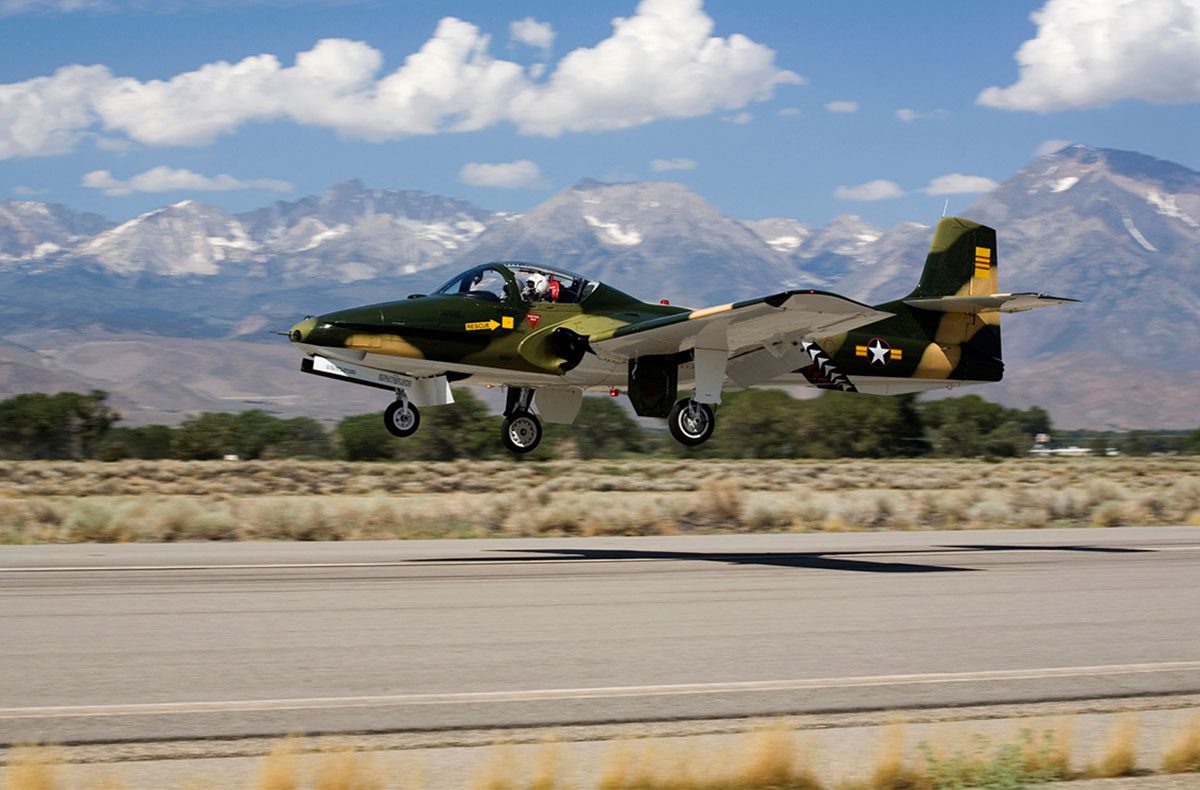
“You have the aircraft.”
My instructor pilot says, initiating the first part of a three-part transfer of aircraft control. The three-part script follows standard procedure to ensure a clear understanding of who is in control of the aircraft.
Before uttering the words, “I have the aircraft,” I quickly assess the position of the aircraft, ensuring a seamless transfer of control.
I am flying a T-37, a 1950s Cessna military twin-engine jet trainer, positioned three feet away from my classmate’s T-37—intentionally. This close proximity is part of the formation phase of pilot training.
Being just three feet away from my classmate’s jet allows me to peer into his cockpit, observing our class patch on the right shoulder of his flight suit. I catch glimpses of my own aircraft’s reflection on the shiny silver tab of the bayonet clip that attaches his oxygen mask to his helmet.
With my oxygen mask in place, I inhale the life-sustaining gas, which permeates my lungs and bloodstream, providing ample oxygen. Compared to my instructor, who has flown in close proximity to other aircraft numerous times, I suspect I am consuming a significantly higher amount of oxygen.
Once I take control, I take a deep breath, causing my mask to tighten against my face. My hands, protected by flame-resistant Nomex gloves, become sweaty as I prepare to assume control of the aircraft. As I exhale, I announce the second part of the transfer by stating, “I have the aircraft.”
Upon hearing those words through my mask, my classmate’s aircraft starts to exhibit erratic behavior. The clarity of our class patch diminishes, and the reflection of my aircraft becomes blurred. The once-stable flight path maintained by my classmate begins to waver.
Ideally, my instructor should confirm my assumption of control by saying, “You have the aircraft,” as the final part of the three-part transfer. However, I hear him say, “I have the aircraft” instead.
The control stick in my hand trembles ever so slightly as I release it and acknowledge, “You have the aircraft.” Even before I let go completely, I sense the aircraft’s movement to the right as we drift away from my classmate’s plane.
The slight shaking of the stick is another technique often used to confirm the transfer of control, even though it is not an official procedure. We affectionately refer to it as a “techcedure.”
The scripted communication, techniques, and procedures serve the purpose of leaving no doubt regarding the pilot in command. However, during my first formation flight training, it becomes evident that I am not flying the aircraft with the same level of proficiency.
The instability experienced in my classmate’s previously steady flight path is a result of the turbulent movements of my aircraft, positioned as his wingman.
My instructor adjusts our flight path and brings our T-37 back into the three foot separation position. Without any apparent recollection of the previous transfer of control, he once again says, “You have the aircraft.” My focus remains fixed on my classmate’s aircraft, allowing me to observe the gauges on his instrument panel and the reflection of white clouds on his dark helmet visor.
Taking a deep breath of oxygen, the rubber mask tightly adheres to my face as my sweaty fingers caress the controls. I confidently declare, “I have the aircraft.”
Blur. Bobble. Haphazard flight path. The stick shakes, and my instructor announces, “I have the aircraft”.
Once again, the instructor steers us away from a potential mid-air collision. This pattern continues for more occasions than I care to admit. Finally, we successfully completed the three-line script:
“You have the aircraft.”
“I have the aircraft.”
“You have the aircraft.”
With the utterance of that final line, I am flying just three feet away from my classmate. Consequently, my gaze remains fixed on his aircraft. My sole responsibility is to ensure that my wings are constantly leveled with my lead. He serves as my horizon, my instrument panel, and the one in charge of navigation and radio calls.
As a wingman, I relinquish some of the typical duties associated with piloting an aircraft. My primary obligation is to maintain a specific position relative to the lead’s aircraft. This necessitates utmost attention to detail, strict adherence to instructions, and swift adjustments to even the slightest changes in the lead’s maneuvering.
As the title implies, the lead leads. The lead pilot assumes responsibility for the entire formation of the aircraft. As a wingman, it is easy to fall into the trap of assuming that the lead pilot will handle everything. However, I must resist complacency and actively engage myself, remaining actively engaged in maintaining my position, comprehending the lead pilot’s intent, anticipating potential challenges, and being prepared to assume the lead if necessary.
The distribution of awareness and responsibility between lead and wingman extends beyond the cockpit. It applies to various contexts, such as the corporate world. If you are not the top executive, your primary duty is to maintain a specific position relative to the organization’s agenda. This requires meticulous attention to detail, strict adherence to instructions, and swift adjustments to even the slightest changes in the company’s course.
Not being in the top position does not excuse assuming that the leader will handle everything. One must combat complacency and remain actively engaged and situationally aware to effectively respond to unexpected events.
Flying in formation demands precision, trust, and teamwork. Similarly, working as part of an effective team, whether inside or outside the cockpit, as a lead or wingman, calls for a proactive approach, readiness to contribute, active engagement in the task at hand, adaptability to unforeseen circumstances, and preparedness to assume a leadership role.
By doing so, we enhance our skills and knowledge while contributing to the overall success of the formation.
“You have the aircraft.”



